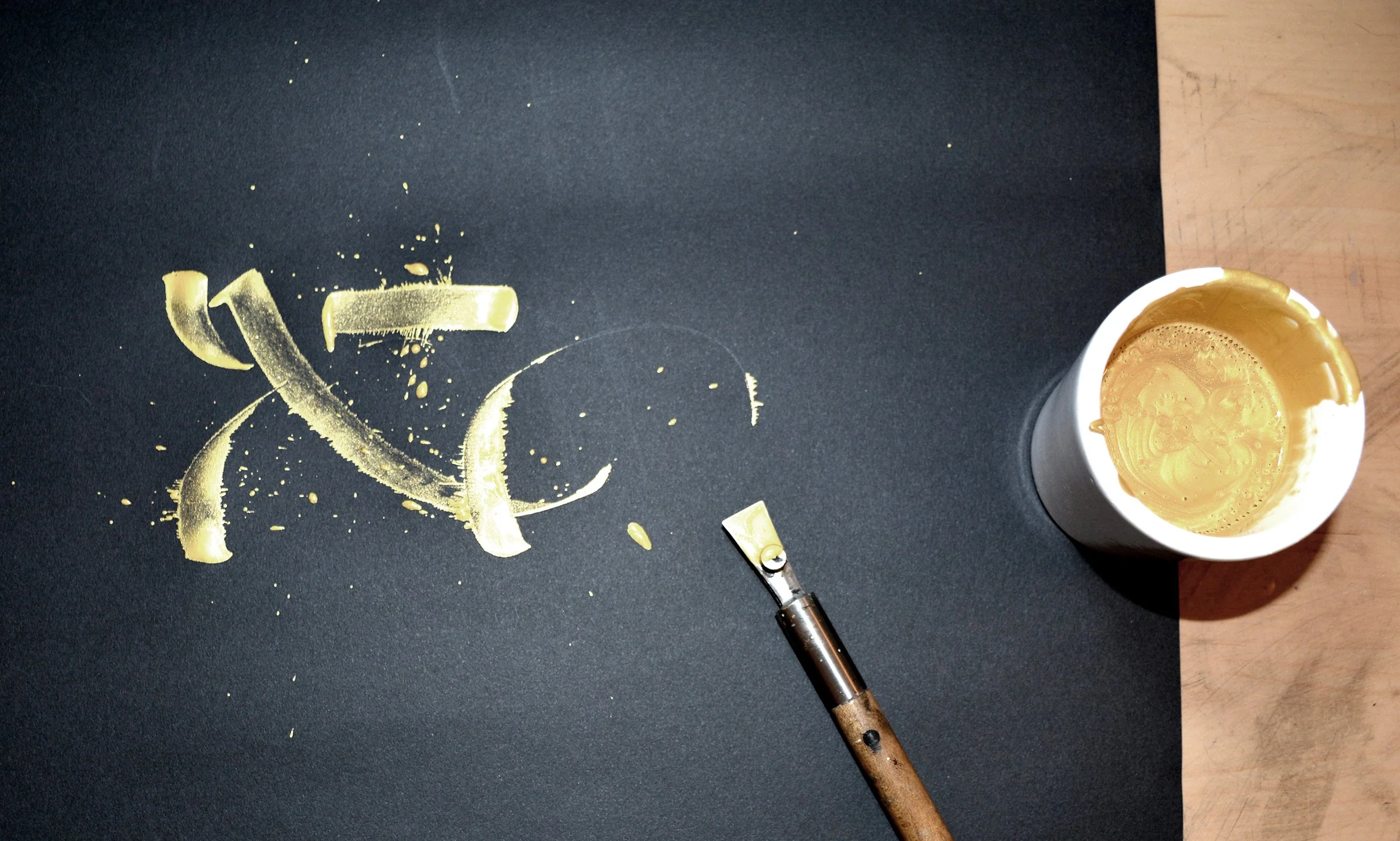earlier proximity
back to the future…
the improvisation and reaction in action
My very first interaction with contemporary Western calligraphy, hence writing, practices started with graphic designers or graffiti writers Niels “Shoe” Meulman, Pokras Lampas, and Said Dokins through their interpretations of calligraphy, mainly focusing on visual appearance and compositions. Being creator-oriented actions in their writing experiences on the walls or vast surfaces with various uncommon materials are highly f.cking eye-catching.
I was also very interested in exploring being involved in the creation process. That meant learning the basics of writing, hence calligraphy. I mainly focused on the Medieval period, when hand-copying was the unique way to write, copy, preserve, or transfer written text grounded in manuscript culture.
I became increasingly interested after my first interaction with contemporary calligraphy practices as a designer.
Observing the current courses, workshops, and online training programs prepared by professionals in the field became crucial to examining and gaining practical knowledge of Western calligraphy.
I realize the crucial part is the passage of time. With time, the doctorate stress leveled up, causing a highly depressed mind reflected in marks, stains, drips, and drops. My dark calligraphic mind manifested itself through the videos, as some can be observed below.
Then, the question arises: What is writing? What is the perception of writing?
According to the Online Etymology Dictionary, the word writing is “to score, outline, draw the figure of” in Old English (written). It continues to illustrate in various languages, namely in Proto-Germanic (written) refers “to tear, scratch,” in Old High German (rizan) refers “to write, scratch, tear,” in German (reißen) refers “to tear, pull, tug, sketch, draw, design,” and in most Indo-European languages the word “to write” refers “to carve, scratch, cut.” Considering the languages mentioned here, the word “to write,” as a verb, has a broad sense of various types of activities, namely “tearing, scratching, sketching, drawing, carving, cutting, pulling, tugging,” which points to the various stages that writing gone through in respect of tools and techniques that used in a particular time.
writing as “an extension of gesture -a way to make a motion visible, memorable, and lasting”
Shepherd, Learn calligraphy: The complete book of lettering and design (2001, p. 9)







